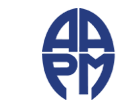| Question 1: Which of the following is NOT a reason that TBCT can achieve improved image quality as compared with CBCT?
|
| Reference: | Zhang T, Schulze D, Xu X, Kim J. Tetrahedron beam computed tomography (TBCT): a new design of volumetric CT system. Phys Med Biol. 2009 Jun 7;54(11):3365-78. |
| Choice A: | Scatter rejection via fan-beam geometry. |
| Choice B: | High performance detector. |
| Choice C: | Reducing motion artifact. |
| Choice D: | Avoiding data truncation due to the limited detector size. |
| Question 2: Which of the following is a bottleneck of tube power for multi-pixel x-ray sources with a fixed anode? |
| Reference: | Krestel, E. Imaging Systems for Medical Diagnostics. (Siemens/Publicis). |
| Choice A: | Heat removal from tube housing. |
| Choice B: | Anode heat capacity. |
| Choice C: | Cathode emission current density. |
| Choice D: | Focal spot power density. |
| Question 3: Which of the following is NOT true of a stationary digital breast tomosynthesis system? |
| Reference: | Tucker AW, Lu J, Zhou O. Dependency of image quality on system configuration parameters in a stationary digital breast tomosynthesis system. Med Phys. 2013 Mar;40(3):031917
|
| Choice A: | Image blur caused by x-ray tube motion is eliminated. |
| Choice B: | Spatial resolution does not depend on the data acquisition time. |
| Choice C: | Spatial resolution is insensitive to angular coverage and number of projection views. |
| Choice D: | Data acquisition time is independent of the number of projection views. |
| Question 4: Which of the following is NOT true of a scanning-beam digital x-ray (SBDX) fluoroscopy system?
|
| Reference: | Speidel MA, Wilfley BP, Star-Lack JM, Heanue JA, Van Lysel MS. Scanning-beam digital x-ray (SBDX) technology for interventional and diagnostic cardiac angiography. Med Phys. 2006 Aug;33(8):2714-27
|
| Choice A: | A tomosynthesis scan is performed every 1/15 sec without mechanical motion. |
| Choice B: | An electron beam is electromagnetically deflected over an array of focal spot positions. |
| Choice C: | The system uses a conventional CsI flat panel detector and anti-scatter grid. |
| Choice D: | The use of a narrow x-ray beam and large airgap reduces detected x-ray scatter. |
| Question 5: Advantages of inverse geometry CT include all of the following EXCEPT: |
| Reference: | Hsieh SS, Heanue JA, Funk T, Hinshaw WS, Wilfley BP, Solomon EG, Pelc NJ. The feasibility of an inverse geometry CT system with stationary source arrays. Med Phys. 2013 Mar;40(3):031904 |
| Choice A: | Improved dose efficiency. |
| Choice B: | Ability to scan very large patients. |
| Choice C: | Reduction of cone-beam artifacts. |
| Choice D: | Reduced detector size. |
| Question 6: In all the different versions of inverse geometry CT, the x-ray source must: |
| Reference: | Schmidt TG, Fahrig R, Pelc NJ, Solomon EG. An inverse-geometry volumetric CT system with a large-area scanned source: a feasibility study. Med Phys. 2004 Sep;31(9):2623-7 |
| Choice A: | Withstand large g-forces. |
| Choice B: | Be very fast at toggling between “on” and “off” states. |
| Choice C: | Be the same size as the detector in 3rd generation CT. |
| Choice D: | Use dispenser cathode emitters. |
